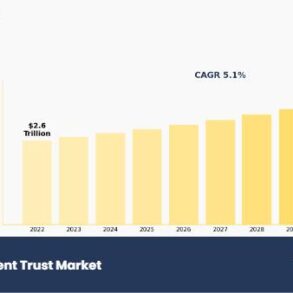
Is the Florida & Texas housing boom ending? Experts predict a market correction, with potential price drops. It has been approximately two years since mortgage rates surged, causing a slowdown in the previously bustling housing market. Despite a significant drop in sales, home prices have continued to rise across the nation, making housing affordability worse than it has been in decades.
Recently, however, housing experts have been predicting that the balance of supply and demand might be catching up with the market. Some foresee a correction or even a crash. Technical Traders strategist Chris Vermeulen notes that current trends in new construction are a “sign that things are really breaking down.”
What are the chances these forecasts will become reality? Upon examining the data, it’s clear that the housing market is not uniform. Some areas are prospering, while others are faltering.
24 of the country’s 150 largest metros have already seen year-over-year listing price declines as of May. Of those, 13 have also decreased compared to two years ago. Could this trickle of falling prices turn into a flood that drives America’s entire housing market into correction territory? Identifying where prices are likely to drop next can provide some insight.
Where Prices Are Likely to Drop?
Realtor.com® housing data was analyzed among the 150 largest metros to pinpoint housing markets with the highest growth in the number of homes for sale compared to a year ago, and lengthening time on the market. These variables were also checked against two years earlier when the COVID-19 pandemic peaked with soaring demand and record-high prices.
From this, the list was narrowed to metros where listing levels are currently above where they were at the same time in 2019, before the housing market’s rapid shift. Realtor.com senior economic analyst Hannah Jones explains, “Increasing inventory levels are a sign that the market is starting to balance out.”
Here are the areas most likely to see price declines.
Florida
Florida’s housing market is showing mixed signals. In six of the 15 Florida markets that fall into the 150 largest metros in the U.S., prices are already down year over year. Miami’s median list price is down 8%, and Naples’ median list price has dropped by 13% compared to this time last year.
In five other Florida metros, prices are still rising compared to a year ago, but market conditions suggest prices may need to come down to meet buyer demand. For instance, in the Palm Bay-Melbourne-Titusville metro, active listings have more than tripled from around 1,100 in May 2022 to over 3,600 in May 2024. Despite these changes, the median price per square foot is still up 5% year over year.
Orlando, the largest Florida metro identified, shows similar trends with the number of homes for sale more than tripling in the past two years and the average time on the market nearly doubling. The median price per square foot is up slightly year over year and flat compared to two years ago, indicating a potential correction.
Other areas like Pensacola, Ocala, and Deltona also show signs of a potential downturn. In Pensacola, the average time on the market has increased from under three weeks two years ago to nearly eight weeks now.
Jones explains, “A lot of these areas, when they’re affordable, they’re highly desirable, but as soon as they got unaffordable, they were no longer a great opportunity.”
Texas
Similar to Florida, Texas has seen rising demand for years due to its affordability compared to coastal metros. Corpus Christi tops the list, with the median price per square foot growing 8% over the past year and 14% compared to two years ago, despite the increasing housing supply and longer time on the market.
Real estate agent Hannah Husby from Keller Williams Coastal Bend in Corpus Christi notes, “There’s still the mindset of sellers to think like, ‘Oh, I can just put whatever price and I’ll get it and I’m just going to wait for the right person to come along,’ but buyers are just not there at the prices that the sellers want.”
McAllen and Killeen are other Texas markets where listing levels and time on the market indicate a tipping point. Killeen has almost twice as many homes for sale as pre-pandemic times and nearly quadruple the listings from two years ago.
Austin, a pandemic boomtown, is now experiencing a downturn. Home prices in Austin are flat year over year and down 8% compared to two years ago.
Denver, CO
Denver has seen the pace of sales slow dramatically. Two years ago, the average home sold in just 10 days; now, it takes about 29 days. Despite this, the price per square foot has continued to rise, with 2% growth year over year and 5% compared to two years ago. The number of active listings has returned to pre-pandemic levels.
Jones highlights, “In Denver, 57% of homes have a price reduction. That’s crazy.”
Potential Correction Markets
- Median list price: $359,975
- Number of homes for sale: 2,136 (up 131% from two years ago)
- Median days on the market: 69 (up 31 from two years ago)
Palm Bay, FL
- Median list price: $399,000
- Number of homes for sale: 3,647 (up 243% from two years ago)
- Median days on the market: 50 (up 21 from two years ago)
McAllen, TX
- Median list price: $279,000
- Number of homes for sale: 2,330 (up 143% from two years ago)
- Median days on the market: 64 (up 25 from two years ago)
Denver, CO
- Median list price: $639,000
- Number of homes for sale: 7,539 (up 120% from two years ago)
- Median days on the market: 29 (up 19 from two years ago)
Deltona, FL
- Median list price: $399,900
- Number of homes for sale: 5,435 (up 219% from two years ago)
- Median days on the market: 62 (up 35 from two years ago)
Ocala, FL
- Median list price: $306,038
- Number of homes for sale: 2,731 (up 239% from two years ago)
- Median days on the market: 59 (up 29 from two years ago)
Orlando, FL
- Median list price: $440,457
- Number of homes for sale: 10,087 (up 174% from two years ago)
- Median days on the market: 51 (up 24 from two years ago)
The housing market shows signs of a potential correction, with some areas already experiencing price declines. The coming months will reveal whether these trends continue and if the broader market will follow suit.
ALSO READ:
This post was originally published on this site be sure to check out more of their content.





